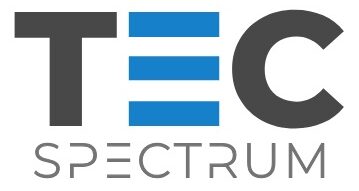In a groundbreaking move toward modernizing civic services, the Capital Development Authority (CDA) in Islamabad has unveiled an ambitious plan to implement a citywide cashless payment system. This initiative is set to transform how residents interact with public services, eliminating the need for cash-based transactions and long queues at CDA offices. By introducing a seamless digital payment platform, the CDA aims to enhance transparency, improve efficiency, and align with Pakistan’s broader vision of digital financial inclusion.
This blog post dives deep into the details of the CDA’s cashless payment system, exploring its features, benefits, and implementation strategy. Whether you’re a resident of Islamabad or a tech enthusiast interested in smart city initiatives, this guide will provide a comprehensive overview of how this system is poised to reshape the capital’s civic landscape.
Why Islamabad is Going Cashless
The decision to transition to a cashless payment system reflects a global trend toward digital transformation in governance. Cities worldwide are adopting digital payment systems to streamline operations, reduce corruption, and improve citizen experiences. Islamabad’s CDA is taking a significant step in this direction, aligning with Pakistan’s Digital Pakistan initiative, which emphasizes technological advancements to foster economic growth and transparency.
Key Objectives of the Cashless System
The CDA’s cashless payment initiative is driven by several key goals:
- Enhanced Transparency: By eliminating cash transactions, the system reduces the risk of financial discrepancies and corruption, ensuring every transaction is traceable.
- Improved Efficiency: Digital payments allow for faster processing, reducing wait times for residents.
- Convenience for Residents: Residents can pay for services like property taxes, water bills, and parking fees from the comfort of their homes.
- Support for Digital Inclusion: The initiative aligns with Pakistan’s push to integrate more citizens into the digital economy, fostering financial inclusion.
How the Cashless Payment System Works
The CDA’s cashless payment system is designed to be user-friendly and accessible. It leverages modern technology to ensure residents can make payments seamlessly through multiple channels. Here’s a breakdown of how the system will function:
1. Digital Payment Platforms
The CDA is collaborating with leading banks to develop a mobile app and an online portal for all civic transactions. These platforms will allow residents to:
- Pay property taxes, water bills, land transfer fees, and other charges.
- Access real-time updates on payment status and history.
- Receive digital receipts for all transactions.
The mobile app and online portal will be designed with a user-friendly interface, ensuring accessibility for users of all ages and tech-savviness levels.
2. QR Code Payment Systems
To facilitate on-site payments, the CDA is introducing QR code-based payment systems at its offices and service centers. Residents can simply scan a QR code using their smartphones to complete transactions instantly. This feature is particularly useful for services like parking fees, where quick and efficient payments are essential.
3. Pilot Program for Testing
Before rolling out the system citywide, the CDA is launching a pilot program in high-traffic areas, such as parking zones. This phase will allow the authority to:
- Test the system’s efficiency and reliability.
- Identify and address potential technical glitches.
- Gather feedback from residents to improve the user experience.
Once the pilot phase proves successful, the system will be scaled across all CDA departments.
Benefits of the Cashless Payment System
The shift to a cashless system brings a host of benefits for both residents and the CDA. Here are some of the key advantages:
- Time Savings: Residents no longer need to visit CDA offices or stand in long queues, saving valuable time.
- Transparency and Accountability: Digital transactions are recorded and traceable, reducing the risk of fraud or mismanagement.
- Convenience: Payments can be made anytime, anywhere, using a smartphone or computer.
- Environmental Impact: By reducing paper-based receipts and cash handling, the system contributes to a greener, more sustainable city.
- Economic Growth: The initiative supports Pakistan’s digital economy by encouraging the use of digital payment methods.
As CDA Chairman Muhammad Ali Randhawa stated, “This shift to a cashless system will not only enhance transparency but also improve the speed and efficiency of public service delivery. Our goal is to make Islamabad a truly digital capital — smart, efficient, and citizen-focused.”
Implementation Strategy: A Phased Approach
The CDA is adopting a phased approach to ensure a smooth transition to the cashless payment system. Here’s how the rollout is planned:
Phase 1: Pilot Program and Infrastructure Setup
The initial phase focuses on setting up the necessary infrastructure, including:
- Developing the mobile app and online portal in collaboration with banks.
- Installing QR code scanners at CDA offices and select parking areas.
- Training CDA staff to manage and troubleshoot the new system.
The pilot program will be launched in high-traffic areas to test the system’s performance under real-world conditions.
Phase 2: Public Awareness Campaigns
To ensure widespread adoption, the CDA is launching public awareness campaigns to educate residents about the new system. These campaigns will include:
- Tutorials on how to use the mobile app and online portal.
- Information sessions at community centers and online platforms.
- Social media campaigns to promote the benefits of cashless payments.
Phase 3: Citywide Rollout
Once the pilot program is deemed successful, the cashless system will be expanded to all CDA departments. This phase will involve:
- Integrating the system with additional services, such as land transfers and utility payments.
- Scaling up infrastructure to handle increased transaction volumes.
- Continuously gathering resident feedback to refine the system.
Challenges and Solutions
While the cashless payment system holds immense promise, it also comes with potential challenges. The CDA is proactively addressing these to ensure a seamless transition:
Challenge 1: Digital Literacy
Not all residents may be familiar with digital payment platforms. To address this, the CDA is:
- Offering step-by-step guides and video tutorials.
- Setting up helpdesks at service centers for in-person assistance.
- Partnering with local organizations to provide digital literacy training.
Challenge 2: Internet Connectivity
Reliable internet access is crucial for digital payments. To mitigate connectivity issues, the CDA is:
- Ensuring the mobile app supports offline payment options where possible.
- Collaborating with telecom providers to improve internet coverage in Islamabad.
- Providing alternative payment methods, such as QR codes, for areas with limited connectivity.
Challenge 3: Resistance to Change
Some residents may prefer cash-based transactions due to habit or mistrust of digital systems. The CDA is addressing this by:
- Highlighting the security features of the digital platform, such as encryption and fraud protection.
- Offering incentives, such as discounts or waived fees, for early adopters of the cashless system.
- Conducting community outreach to build trust in the new system.
The Bigger Picture: Islamabad as a Smart City
The cashless payment system is a cornerstone of Islamabad’s transformation into a smart city. By leveraging technology, the CDA is paving the way for a more efficient, transparent, and citizen-centric capital. This initiative aligns with Pakistan’s broader Digital Pakistan vision, which aims to:
- Promote digital financial inclusion.
- Reduce bureaucratic hurdles in government services.
- Foster innovation and economic growth through technology.
As a senior CDA official noted, “Imagine not having to stand in long lines or carry cash to pay your water bill. That is the future we are building.” This vision of a digital Islamabad is not just about convenience—it’s about creating a city that is responsive to the needs of its residents.
How Residents Can Prepare for the Transition
To make the most of the cashless payment system, residents can take the following steps:
- Download the Mobile App: Once available, download the official CDA app from the App Store or Google Play.
- Set Up a Digital Wallet: Link your bank account or credit/debit card to the app for seamless payments.
- Familiarize Yourself with QR Codes: Practice scanning QR codes using your smartphone’s camera or a dedicated app.
- Stay Informed: Follow CDA’s official website and social media channels for updates on the rollout and tutorials.
Conclusion: A Step Toward a Digital Future
The CDA’s cashless payment system marks a significant milestone in Islamabad’s journey toward becoming a smart city. By embracing digital payments, the CDA is not only streamlining civic services but also setting a precedent for other cities in Pakistan to follow. This initiative promises to make transactions faster, more transparent, and more convenient for residents, while supporting the country’s broader goals of digital financial inclusion.
As Islamabad takes this bold step into the digital age, residents can look forward to a more efficient and citizen-focused capital. Stay tuned for updates on the pilot program and the official launch of the cashless system.















